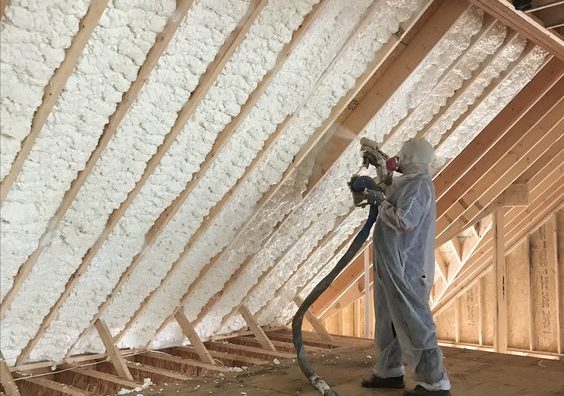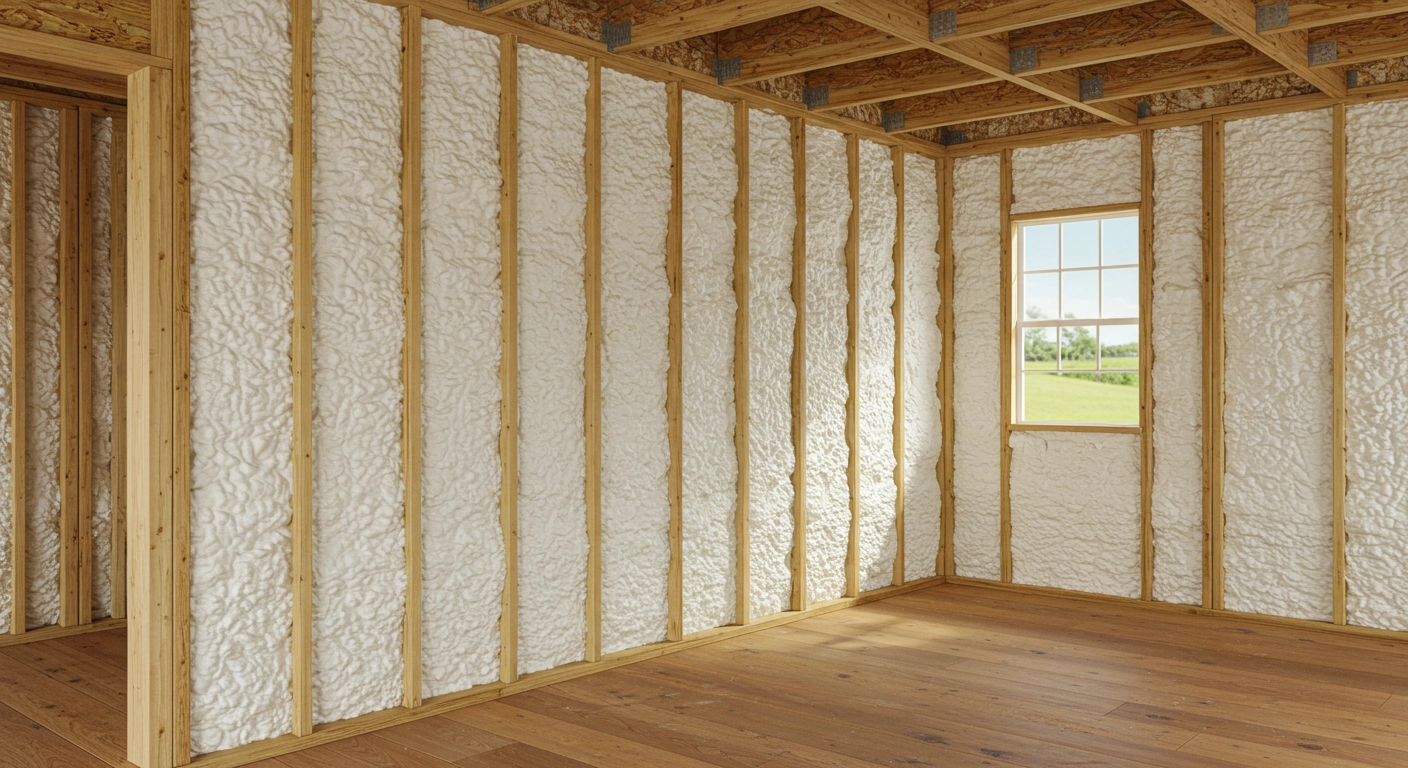For first-time homeowners in Burlington, the smartest insulation tip is to think beyond just adding more material and instead focus on creating a complete, sealed building envelope. While insulation depth (R-value) is important, the real gains in comfort and energy savings come from stopping air leakage. Sealing the gaps in the attic, crawl space, and around the foundation prevents the humid summer air and chilly winter drafts of the Piedmont region from getting in, which is the key to a comfortable home and lower energy bills.
Owning your first home can be overwhelming, and it’s easy to overlook something as hidden as insulation. This guide provides practical, expert-backed advice to help new homeowners in the Burlington area make intelligent decisions about their home’s insulation. These tips are designed to offer the biggest impact on both your comfort and your wallet.
Tip 1 Start with a Professional Energy Audit
Before spending any money, the first smart step is to get a professional energy audit. This is like a doctor’s check-up for your house. A certified residential insulation contractor in Burlington can use tools like a blower door to depressurize the house and a thermal camera to actually see where air is leaking and where insulation is missing or underperforming.
An audit provides a clear, prioritized roadmap for improvements. Instead of guessing where the problems are, you get a data-driven report that might reveal that the biggest issue isn’t the attic, but the unsealed rim joists in the crawl space. For a first-time homeowner, this objective information is invaluable. It prevents wasting money on projects that won’t solve the core issues and ensures that every dollar spent on upgrades delivers a real return.
Tip 2 Focus on the Highest-Impact Areas
Not all insulation projects are created equal. For most homes in Burlington, the two areas that offer the biggest bang for your buck are the attic and the crawl space.

The Attic The Lid on Your Home
Heat naturally rises. In the winter, an under-insulated attic is like an open chimney, letting all the expensive warm air escape. In the summer, it’s the opposite. The sun beats down on the roof, turning the attic into an oven that can reach 150°F. This heat radiates down into the living space, making the second floor hot and forcing the air conditioner to work overtime. The current recommendation for attics in Burlington (Climate Zone 4) is an insulation level of R-38 to R-60.
The Crawl Space The Unseen Comfort Killer
Many homes in the area have crawl spaces, which are a major source of discomfort and moisture problems. A traditional vented crawl space lets in cold, damp air in the winter, which makes the floors above it cold. In the summer, it lets in humid air, which can lead to mold, musty smells, and wood rot. Sealing the vents and insulating the foundation walls (a process called encapsulation) is one of the most effective upgrades for improving comfort and indoor air quality.
Bonus Tip: Insulating and sealing the rim joist, the wooden perimeter that sits on top of your foundation walls, is a quick and highly effective project. It seals one of the largest air leakage points in a home.
Tip 3 Understand That Air Sealing Comes First
This is the tip that separates a good insulation job from a great one. You can pile three feet of the best insulation in your attic, but if you don’t seal the air leaks first, you’ll still be wasting energy. Before any new insulation is installed, a professional should seal all the penetrations in the attic floor and crawl space. This includes:
- Gaps around plumbing pipes and vents.
- Holes drilled for electrical wiring.
- Spaces around recessed light fixtures and ceiling fans.
- The attic access hatch or door.
Materials like caulk and expanding foam are used to create a continuous air barrier. This step is non-negotiable for achieving real results.
Tip 4 Choose the Right Material for the Right Job
There’s no single “best” insulation. The smart choice depends on the application, budget, and performance goals.
| Insulation Type | Best For | Key Strengths | Considerations for Burlington |
|---|---|---|---|
| Fiberglass | DIY top-ups, standard attics | Low cost, readily available | Can hold moisture in humid crawl spaces, doesn’t stop air leaks. |
| Cellulose | Dense-packing walls, attics | Made from recycled material, good R-value | Can settle over time, will absorb moisture if a leak occurs. |
| Open-Cell Spray Foam | Sealed attics, noise reduction | Excellent air seal, great for sound dampening | Lower R-value per inch, not for areas with direct water risk. |
| Closed-Cell Spray Foam | Crawl spaces, basements, rim joists | Excellent air seal, waterproof, adds structural strength | Higher cost, best for moisture-prone areas. |
Bonus Tip: Many homeowners find a “hybrid” approach is the most cost-effective. For instance, using durable, waterproof closed-cell spray foam in the damp crawl space and more affordable blown-in fiberglass in the dry attic after it has been thoroughly air sealed.

Things to Consider Before Making a Decision
While choosing the right material is important, a successful project depends on more than the product alone. As a new homeowner, it’s easy to get focused on just the materials, so here are a few other factors to weigh carefully.
The Installer is More Important Than the Product
This is especially true for spray foam insulation, which is manufactured on-site. The quality of the final product is entirely dependent on the technician’s skill and their equipment. A poor installation can lead to poor performance or even lingering chemical odors. Always choose a certified, insured, and experienced contractor. Don’t be afraid to ask for references.
Long-Term Value vs Upfront Cost
High-performance insulation solutions like spray foam have a higher initial cost. However, the energy savings over time, combined with added benefits like moisture control and increased home durability, often provide a strong return on investment. As a first-time homeowner, think about how long you plan to be in the house and weigh the long-term benefits against the immediate cost.
Your Home’s Ventilation Needs
Creating a very airtight home is great for energy efficiency, but you also need to ensure a supply of fresh air. A highly sealed home may benefit from a mechanical ventilation system, such as an energy recovery ventilator (ERV), to maintain excellent indoor air quality. A good insulation professional can help determine if this is necessary for your home.
Questions People Ask About Home Insulation
Here are answers to some common questions from new homeowners.
Do I have to remove the old insulation before adding new?
If the old insulation is wet, moldy, or has been infested by pests, it must be removed. If it’s just old but still clean and dry, you can often add new insulation on top of it, but only after you’ve air sealed the area.
What is an R-value?
R-value is a measure of an insulation’s ability to resist the flow of heat. The higher the R-value, the better it insulates. Different materials have different R-values per inch.
Can I do this myself to save money?
While a handy homeowner might be able to roll out some fiberglass batts, tasks like thorough air sealing and the installation of blown-in or spray foam insulation should be left to the professionals to ensure it’s done safely and effectively.
Will new insulation really lower my bills?
Yes. According to the EPA, homeowners can save an average of 15% on heating and cooling costs by air sealing their homes and adding insulation in attics, floors, and crawl spaces.
Does insulation help in the summer too?
Absolutely. Insulation works year-round. In the summer, it slows the transfer of heat from the hot outdoors into your cool, air-conditioned home, which is especially important during Burlington’s hot and humid summers.
A Smart Start to Homeownership
For first-time homeowners in Burlington, making smart decisions about insulation is one of the best investments you can make in your new property. It pays off every single day in improved comfort and every month in lower utility bills. By starting with a professional assessment and focusing on high-impact areas and air sealing, you can ensure your new house truly feels like a comfortable, efficient home.
Getting Expert Advice for Your New Home
The best way to get started is with a professional consultation. An experienced insulation company can perform a thorough audit and provide a clear, prioritized plan tailored to your new home and budget. For those in the Burlington area, a company like Raleigh Excel Spray Foam Insulation offers these services throughout the region and can help new homeowners make smart choices. They can be reached at (919) 301-9435 or via email at info@raleighexcelsprayfoam.com to schedule an evaluation.
Reviewer: With nearly a decade in the spray foam insulation field, William Harris reviewed this post and provided guidance that reflects both technical understanding and real-world marketing experience.

